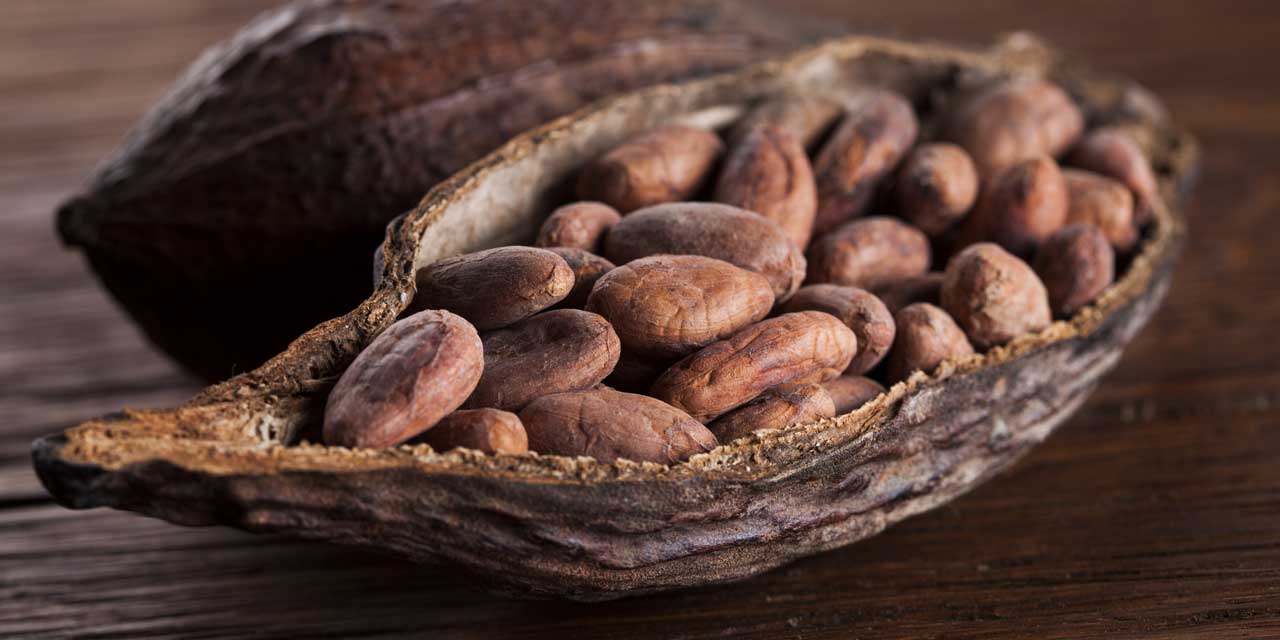Cocoa benefits
Promoting heart health
The Cocoa bean has been recognized as a rich source of flavonoids, mainly the flavanols subclass in the form of epicatechin and catechin. They help to protect you from heart disease by lowering blood pressure, improving blood flow, and preventing cell damage.
Cocoa powder also contains polyphenols, a type of antioxidants that help to improve cholesterol and blood sugar levels and reduce the risk of heart disease.
Anti-inflammatory
Cocoa powder is rich in theobromine, which helps to reduce inflammation and can protect you from diseases such as heart disease, cancer, and diabetes.
May help to reduce weight
Since cocoa is rich in phytonutrients but low in fat and sugar, the calories you get from cocoa powder will be packed with healthy chemicals. Studies have also found that cocoa helps to regulate energy use and metabolism while also increasing feelings of fullness. In other words, although chocolate is commonly associated with weight gain, cocoa powder may actually help to reduce weight while providing important nutrients.
Promotes cognitive performance
Research shows that adding more cocoa powder to your diet helps to improve your attention, working memory, and general cognition. It may also restore cognitive performance in people with sleep loss.
Enhancing the immune system
Cocoa powder contains iron, zinc, and selenium. These minerals help your body function and give your immune system a boost.
Healthy muscle and nervous system function
Magnesium is important for regulating muscle contraction and helping with nerve function. The mineral also helps protect nerve cells and reduce the risk of neurological disorders. Cocoa powder contains magnesium, which means consuming it can help with maintaining healthy muscle and nervous system functioning.
Mood lifter
Chocolate contains a number of compounds associated with mood-lifting chemicals in the brain. Often mentioned is phenylethylamine, a natural antidepressant and one of the chemicals your brain produces as you fall in love. Tryptophan, an amino acid present in small quantities in chocolate, is linked to the production of serotonin, a neurotransmitter that produces feelings of happiness. A handful of other substances also add to chocolate’s purported effects – for example theobromine can increase heart rate, and caffeine is well known as a ‘wake-up’ drug.
Interesting facts about cocoa
Ancient South American cultures like the Aztecs, Mayans, and others first developed cocoa as a crop. The cacao bean was so significant to the local cultures that it was used as a currency in trade, given to warriors as a post-battle reward, and served at royal feasts.
Adopted by the Conquistadors
After arriving in the New World and beginning to invade, colonize, and ultimately destroy the native cultures, the Spanish Conquistadors also discovered the value of the local cacao crop. However, they brought their own innovation to the appropriated drink—the addition of sugar and spices to sweeten the bitter cocoa. By the early seventeenth century drinking chocolate began to be popular in Spain and was first accepted by the upper classes. The Spanish kept the production method a secret from other Europeans for almost 100 years after their discovery.
Popular drink among Europe’s elites
Impossible to be kept a secret forever, chocolate eventually spread across the rest of western Europe by the end of the seventeenth century – served as a drink to the elites in special “chocolate houses” across France, England, and beyond. It was hailed as being both delicious and healthy, and cocoa ultimately gained the reputation of being an aphrodisiac. Chocolate and the two stimulant drinks, coffee and tea, became the Enlightenment’s most fashionable non-alcoholic beverages – and who knows: they may have promoted clear thinking thanks to the healthy plant substances contained in them, and thus contributed to the scientific breakthroughs of the Enlightenment.
Chocolate as a solid mass available to the masses
The onset of the Industrial Revolution marked the end of chocolate’s exclusivity. Steam-powered machines made the production of cocoa powder significantly quicker and more affordable. Thanks to the discovery by Joseph Fry that adding cacao butter to the cocoa powder formed a solid mass, solid chocolate found wild success by 1850. Sixty years later, the art of creating chocolate confections with flavored filling—referred to as pralines by their Belgian inventor, Jean Neuhaus II—went public. From there, the cocoa and chocolate industry exploded in popularity and quickly spread around the world.
Today, over 4.5 million tons of cocoa beans are consumed annually around the globe, in everything from drinks to candy bars.
